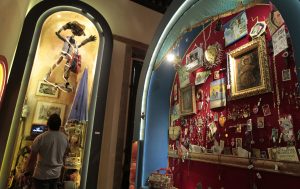
Mexico City, Jun 22 (EFE).- With elements of pop art and new technologies that could well symbolize the capital’s mix of history and innovation, a new exposition invites the teeming megalopolis that is Mexico City to seek a better future through new ways of thinking.
“Miradas a la Ciudad” (Views of the City) is the name of the permanent exposition space opened by the Museum of the City of Mexico with the intention that artists and the public “make it their own as a reflective experience,” the director of the expo, Jose Maria Espinasa, told EFE.
Different galleries offer a many-faceted concept of the city, with a galaxy of videos, handicrafts, maps, immersive projections, 360-degree tours, photos and artistic elements of all kinds.
“All the galleries feature sights that are both independent and interactive,” and invite spectators’ participation in designing their own expo, the director said.
Espinasa said that if visitors to the museum “are looking for an art exhibit, they’ll find it; if they’re looking for a technology expo, they’ll find it, and if they want a way to learn about architecture and urbanism, they’ll find it.”
After a space dedicated to urbanism with maps showing the city’s development through the ages, the visitor moves on to the exhibition “From Tenochtitlan to Mexico City.”
This presents items that act as an analysis of different social and cultural changes the capital has gone through, starting with its existence as the capital of the Aztec Empire up to the globalization and mixed races of today.
The big attraction of this section is a large family tree with an eagle and prickly pear at its roots – a reference to the legend about the founding of Tenochtitlan – and which branches into such personalities as Sor Juana Ines de la Cruz, Pancho Villa, Diego Rivera and Elena Poniatowska.
“Seeing all these exhibitions will make us think up more and better solutions,” Espinasa said, adding that, at the end of the day, “a city is a utopia in the process of development and we’re always working on it – it never ends.”
The project ha been coordinated by Mediapro Exhibitions, a division of the Mediapro Group, which undertakes the creation and development of expositions and museum methods of classification and display.
